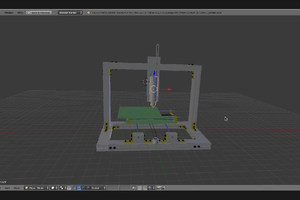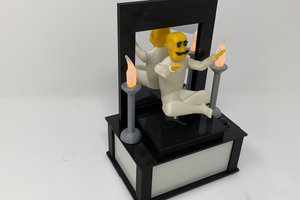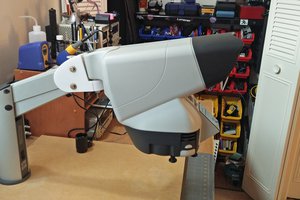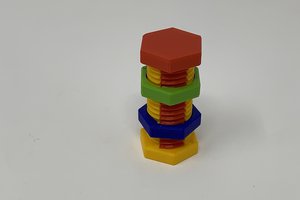I tried to locate a replacement, but it was a part that was no longer in production, and there was only some stock remains, so I was unable to locate one shipped to Spain under 40$ (which was too much for a simple plastic part for me). So I decided to replicate the piece using a 3D printer.
The original part code is 30802471LH. It may seem very easy to replicate given you take correct measurements using a caliper, but there is a critical point that should match the original, its flexibility. If you take a look at the original (broken) part, it is designed to bend on the three marked areas. The other two "legs" are there to use the pillar as a resistance to keep the clip pushed to the windscreen. So the part doesn't have to hold the ticket mechanically, only functions as a lever between the clip side and the pillar. The part is attached to the pillar using a plastic rivet.
The original part thickness is 1 mm. Since my printer has a 0.4mm nozzle (BQ Witbox 2), the thickness had to be increased to 1.2mm, in order to fit three lines of plastic across the contour of the piece.
Replicating the flexible part of the original part was too complicated, since the best way to print it is lying on one side (as shown on most on the gallery images), which causes the legs to be fused together. The designed part should hold the ticket by itself, not relaying on the pillar to do the resistance. So I skipped the legs and added some rounding to improve strength and avoid future breaking by fatigue. The final printed part was printed using 100% infill, supports, and 0.15mm layers.
I used Solidworks to design the part, measuring each size and angle using a digital caliper. If it doesn't match perfectly, it will cause the pillar cover not to fit correctly.
Problems found:
- Heat: this is the most critical. The part has been printed using PLA, but the high temperatures inside the car on sunny days caused the part to deform. I will try to print it with ABS or order a part printed with SLA.
- Thickness: as I commented earlier, given the printing orientation and nozzle size, the thickness should be either 0.8 or 1.2mm. Since it has to be resistant, I chose 1.2mm.

 Foxmjay
Foxmjay
 Greg Zumwalt
Greg Zumwalt
 leumasyerrp
leumasyerrp